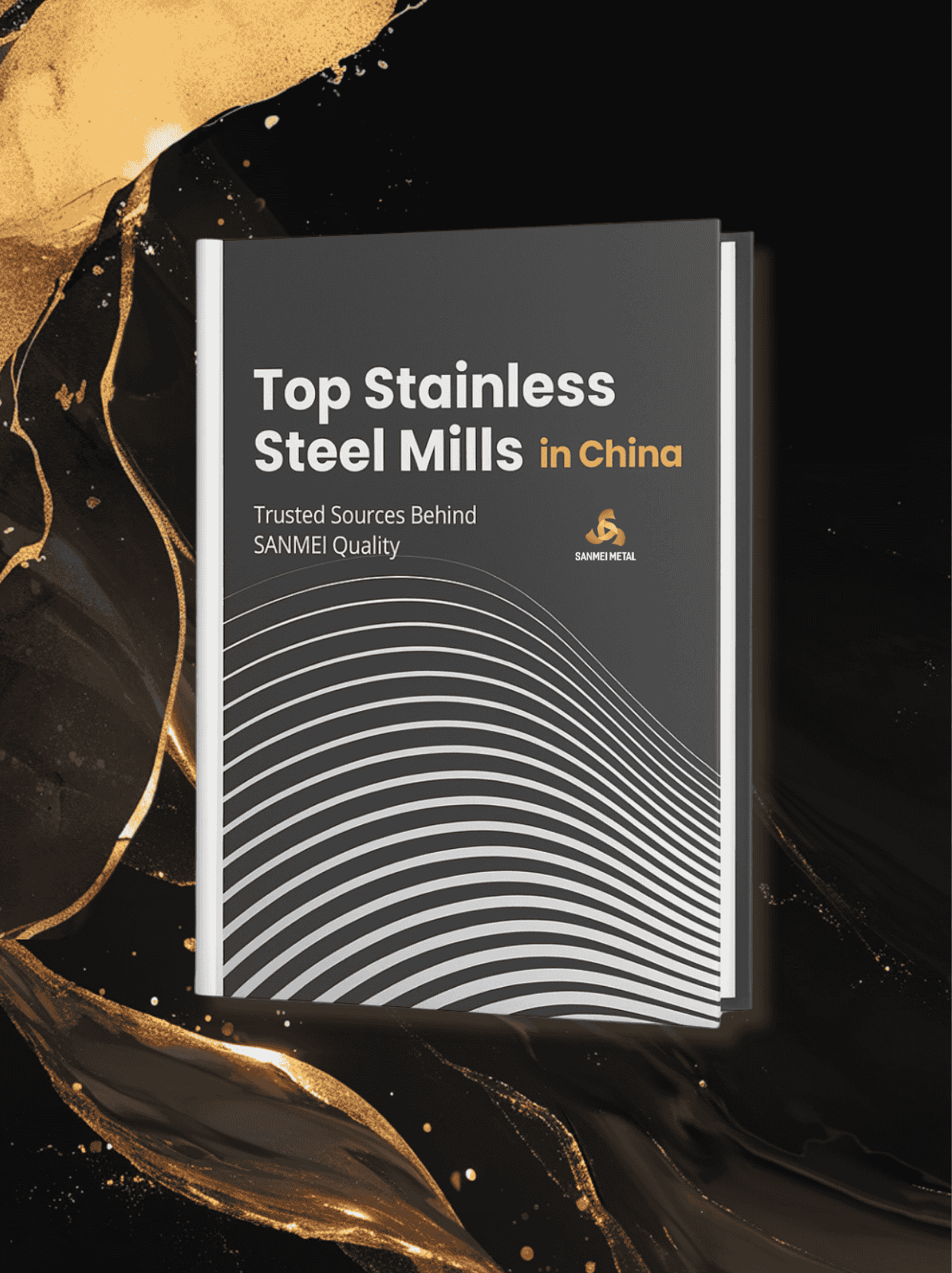
Hol dir deins FREI Zugang: Chinas #1-Stahlwerksdossier
Käuferorientiert: Passende Walzwerke nach Güteklasse/Oberflächenbearbeitung/Breite-Dicke/Anwendung
BAOWUTsingshanLiscoTisco
Details und Beispiele ansehen →


Überblick
Der rostfreie Stahl 420, bekannt als S42000, ist eine martensitische, härtbare Legierung, die sich im Vergleich zu anderen rostfreien Stählen wie 410 und 416 durch eine höhere Festigkeit und Härte auszeichnet. Er enthält mindestens 12% Chrom für die Korrosionsbeständigkeit und einen höheren Kohlenstoffgehalt, der seine Verschleißfestigkeit erhöht und es ihm ermöglicht, nach der Wärmebehandlung eine Rockwell-Härte von bis zu 50 HRC zu erreichen. Dieser Stahl weist im geglühten Zustand eine gute Duktilität auf, seine Bearbeitbarkeit nimmt jedoch ab einer Härte von 30 HRC ab. Trotz seiner guten Korrosionsbeständigkeit, insbesondere wenn er gehärtet und poliert wird, ist er nicht so widerstandsfähig wie herkömmliche austenitische Sorten und wird durch einen Verlust an Duktilität bei Temperaturen unter Null und einen Festigkeitsverlust bei höheren Temperaturen aufgrund von Überhärtung eingeschränkt. Zu den üblichen Anwendungen gehören Buchsen, zahnmedizinische und chirurgische Instrumente, Pumpenteile, Ventilkomponenten und Wellen. Die Verwendung oberhalb der Anlasstemperaturen wird nicht empfohlen, da sich die mechanischen Eigenschaften verschlechtern; Schweißen ist mit den richtigen Techniken möglich.
Allgemeine Eigenschaften
Edelstahl 420 ist eine martensitische Stahlsorte mit hohem Kohlenstoffgehalt, die ein ausgewogenes Verhältnis zwischen Härte und Korrosionsbeständigkeit bietet. Er ist bekannt für seine hohe Härte, Verschleißfestigkeit und moderate Korrosionsbeständigkeit. Die Zusammensetzung des Stahls umfasst Kohlenstoff (C: 0,15-0,40%), Chrom (Cr: 12,0-14,0%) und andere Elemente in kleineren Mengen wie Mangan (Mn), Silizium (Si), Phosphor (P) und Schwefel (S).
Anwendungen
Der rostfreie Stahl 420 wird in einer Vielzahl von Anwendungen eingesetzt, bei denen es auf Festigkeit und Haltbarkeit ankommt, z. B. in Besteck, chirurgischen Instrumenten und Werkzeugen. Er wird auch in Präzisionsmaschinen, Lagern, elektrischen Geräten, Instrumenten, Transportfahrzeugen, Haushaltsgeräten und Lebensmittelutensilien verwendet.
Korrosionsbeständigkeit:
Der rostfreie Stahl 420 bietet zwar eine gute Korrosionsbeständigkeit, insbesondere wenn er gehärtet und poliert ist, ist aber nicht so beständig wie die üblichen austenitischen Sorten. Seine Korrosionsbeständigkeit ist bei Minusgraden und bei erhöhten Temperaturen aufgrund von Überhärtung beeinträchtigt.
Hitzebeständigkeit:
Der nutzbare Einsatzbereich von nichtrostendem Stahl 420 ist durch den Verlust der Duktilität bei Minusgraden und den Verlust der Festigkeit bei höheren Temperaturen aufgrund von Überhärtung begrenzt.
Bearbeitbarkeit:
Der rostfreie Stahl 420 ist im geglühten Zustand relativ leicht zu bearbeiten, aber die Bearbeitung wird schwieriger, wenn er auf über 30 HRC gehärtet ist.
Schweißen:
Schweißen ist bei dieser Legierung aufgrund ihrer Härtungseigenschaften nicht üblich, aber mit den richtigen Techniken und einer Wärmebehandlung nach dem Schweißen zur Vermeidung von Rissen ist es möglich.
Warmbearbeitung:
Die Warmumformung von rostfreiem Stahl 420 kann seine Zähigkeit und Verschleißfestigkeit verbessern.
Kaltbearbeitung:
Durch die Kaltumformung können die Härte und die Festigkeit des Stahls erhöht und gleichzeitig die Oberflächenqualität und die Maßgenauigkeit verbessert werden.
Glühen:
Das Glühen dient der Erweichung des Stahls, der Verbesserung der Bearbeitbarkeit und der Vorbereitung auf weitere Wärmebehandlungsverfahren.
Anlassen:
Das Anlassen dient dem Abbau von Sprödigkeit und inneren Spannungen nach dem Härten.
Härten:
Der rostfreie Stahl 420 kann durch Erhitzen und schnelles Abkühlen (Abschrecken) gehärtet werden, um hohe Härtegrade zu erreichen.
| Eigentum | Wert |
|---|---|
| Dichte | 7,74 g/cm³ |
| Elastizitätsmodul | 200 GPa (29 x 10^6 psi) |
| Wärmeausdehnungskoeffizient | 10,3 μm/m-°C (5,7 μin./in.-°F) |
| Wärmeleitfähigkeit | 24,9 W/m-K (14,4 Btu/ft-h-°F) |
| Spezifische Wärme | 460 J/kg-K (0,11 Btu/lb-°F) bei 0-100°C (32 bis 212°F) |
| Elektrischer Widerstand | 0,55 μΩ-m bei 20°C |
Eigentum | Streckgrenze, min. (ksi) | Zugfestigkeit, min. (ksi) | Dehnung, min. (%) | Härte, max. (Rb) |
420 | 345 (50) | 655 (95) | 25 | 321 HBS |
| Grad | Kohlenstoff (C) | Mangan (Mn) | Silizium (Si) | Phosphor (P) | Schwefel (S) | Chrom (Cr) | Nickel (Ni) | Molybdän (Mo) | Eisen (Fe) |
| 420 | 0.15 - 0.40% | ≤1.00% | ≤1.00% | ≤0,040% | ≤0,030% | 12.0 - 14.0% | ≤0,75% | ≤0,50% | Gleichgewicht |

420er Edelstahl eignet sich hervorragend für feuchte oder raue Umgebungen, ist rostbeständig und verlängert die Lebensdauer des Produkts.

SS420 weist eine hohe Festigkeit auf und eignet sich daher für Anwendungen mit hoher Beanspruchung und häufiger Nutzung, wie etwa Werkzeuge und medizinische Geräte.

420er Edelstahl hat eine glatte Oberfläche, auf der sich nicht so leicht Schmutz ansammelt, sodass er leicht zu reinigen und zu pflegen ist und sich daher sehr gut für die Lebensmittelverarbeitung und medizinische Umgebungen eignet.

| Typ | Breite (mm) | Gewicht (MT) | Dicke (mm) | ||||
| 420 Spule | 1000, 1219, 1240, 1500 oder kundenspezifisch | 3-10 | 0.15-3.0 | ||||

| Typ | Breite (mm) | Länge (mm) | Dicke (mm) | |||||||||
| 420 Blätter | 1000, 1219, 1240, 1500 oder kundenspezifisch | 2000, 2438, 2500, 3000, 3048 | 0.3-3.0 | |||||||||
Wir verpflichten uns, unseren Kunden den besten und qualitativ hochwertigsten Service zu bieten, um ihre Zufriedenheit sicherzustellen.









Von renommierten Institutionen zertifiziert und der Einhaltung internationaler Standards in jeder Hinsicht verpflichtet.




Kundenfeedback ist der authentischste Ausdruck der Qualität eines Unternehmens.
Weitere technische Referenzen von Sanmei Metal zu Edelstahlspulen und Edelstahlblechen anzeigen.
Hauptsitz:
Creating Center, Nr. 142, Yuhe Road, Lecong Town, Shunde District, Foshan City, Guangdong Province, China. 528315
Fabrik: Logistikstadt Liyuan, Stadt Chencun, Bezirk Shunde, Stadt Foshan, Provinz Guangdong, China. 528313
Lokale Support-Basis in Australien: (Yatala, QLD) – Eröffnung 2026